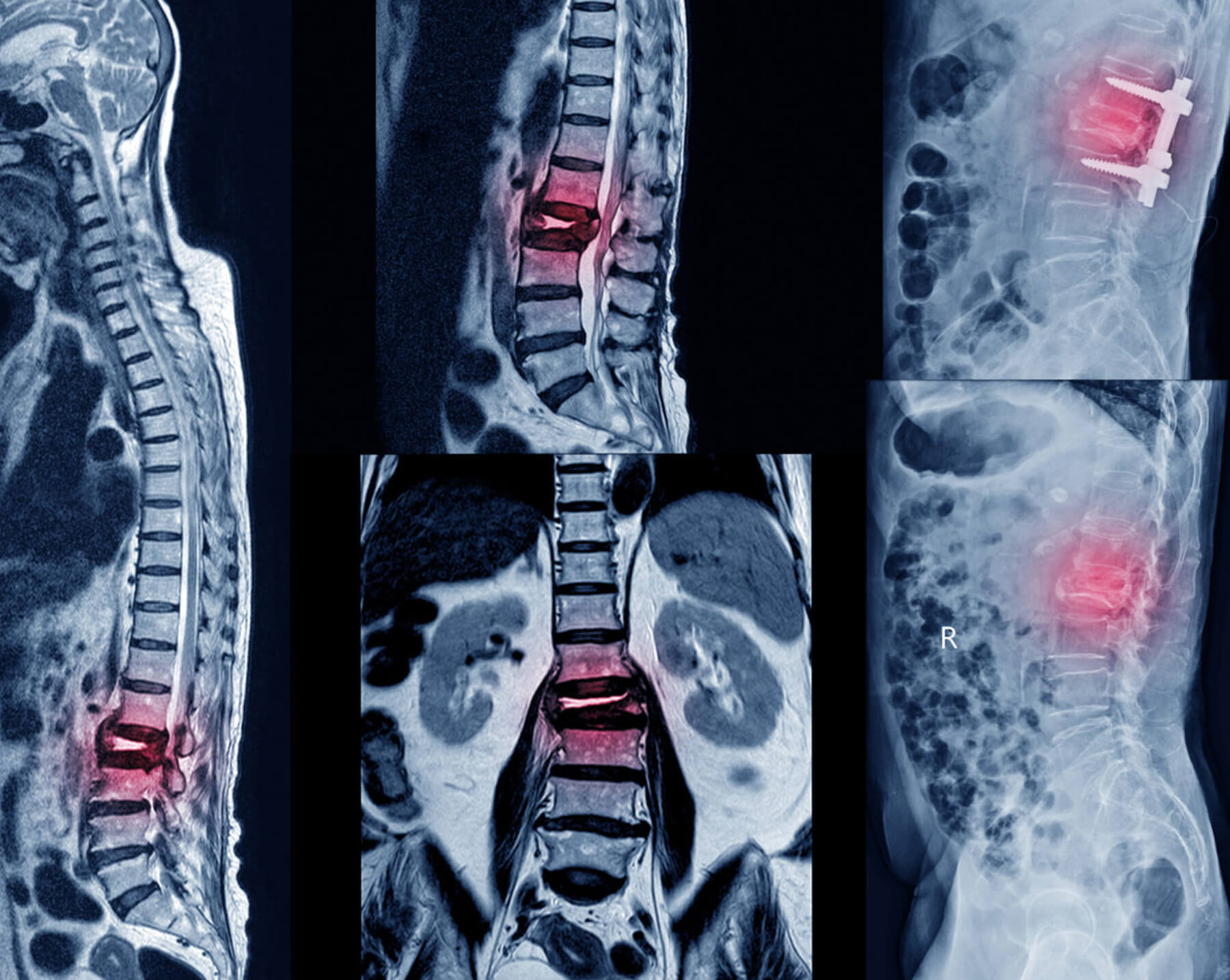

Our ServicesLumbar spine tumours
The spine is our body’s structural pillar, and when a tumour develops in any part of it-especially the lumbar spine, it can significantly impact mobility and quality of life. Lumbar spine tumours, although relatively rare, require timely diagnosis and appropriate treatment due to their potential to cause nerve compression and permanent neurological deficits.
In this blog, we’ll explore what lumbar spine tumours are, what causes them, how to recognize the symptoms, and what treatment options are available.

What is a Lumbar Spine Tumour?

A lumbar spine tumour is an abnormal growth that occurs in the lower part of the spine (the lumbar region). These tumours can be benign (non-cancerous) or malignant (cancerous) and may originate in the spine (primary tumours) or spread from other parts of the body (metastatic tumours).
Types of Tumours:
- Primary Tumours – Originate in the spine itself, e.g., ependymoma, osteoblastoma, chordoma, schwannoma.
- Secondary (Metastatic) Tumours – Spread from cancers in the breast, lung, prostate, kidney, or thyroid.
- Intramedullary Tumours – Located inside the spinal cord.
- Intradural-Extramedullary Tumours – Within the spinal canal but outside the cord.
- Extradural Tumours – Outside the dura mater, commonly metastatic.
When conservative  care needs
care needs
a specialist’s touch.
touch.
Symptoms to Watch For
Symptoms of lumbar spine tumours vary depending on their size, type, and location. Common signs include:Lower back pain not relieved by rest and worsening over time
Radiating leg pain (sciatica-like symptoms)
Weakness or numbness in legs or feet
Difficulty walking or balancing
Loss of bowel or bladder control
Paralysis (in advanced cases)
Note: Some tumours may remain asymptomatic for a long time.
Causes and Risk Factors
While the exact cause of primary spinal tumours is often unknown, several risk factors include:Genetic syndromes (e.g., neurofibromatosis, von Hippel-Lindau disease)
Weakened immune system
History of cancer elsewhere in the body
Exposure to radiation
Diagnosis
Early and accurate diagnosis is key to managing lumbar spine tumours. Common diagnostic tools include:MRI Scan – Best for detecting soft tissue involvement and spinal cord compression
CT Scan – Useful for assessing bone involvement
X-rays – May show structural abnormalities
Biopsy – Confirms tumour type
Blood tests – May support diagnosis in metastatic disease
Treatment Options
Treatment depends on the type, size, location, and whether the tumour is benign or malignant. Options include:01.
Surgical Removal
- Often the first-line treatment, especially for compressive or symptomatic tumours.
- Minimally invasive or open surgery depending on complexity.
Living with a Lumbar Spine Tumour
Early detection and treatment can significantly improve outcomes. With the right support team-comprising neurosurgeons, oncologists, physiotherapists, and pain specialists-many patients can return to a good quality of life.
Self-Care & Monitoring:
- Routine follow-ups and imaging
- Pain management
- Mental health support
- Adaptive lifestyle changes
Conclusion
Although lumbar spine tumours are uncommon, they are serious and potentially life-altering. Persistent or unexplained back pain should never be ignored. Prompt medical attention and a multidisciplinary approach are essential for effective treatment and recovery.
If you or someone you know is experiencing symptoms of a lumbar spine tumour, consult a spine specialist or neurosurgeon immediately.

